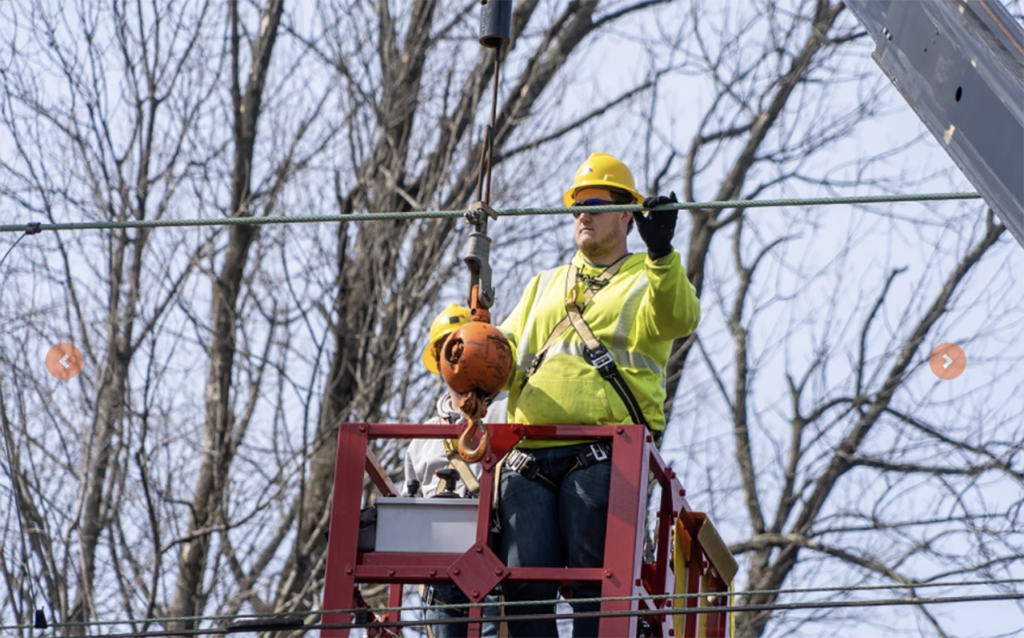
For NJT, a Tree Falls in Maplewood (But That Wasn’t the Only ‘Cutoff’)
Written by David Peter Alan, Contributing Editor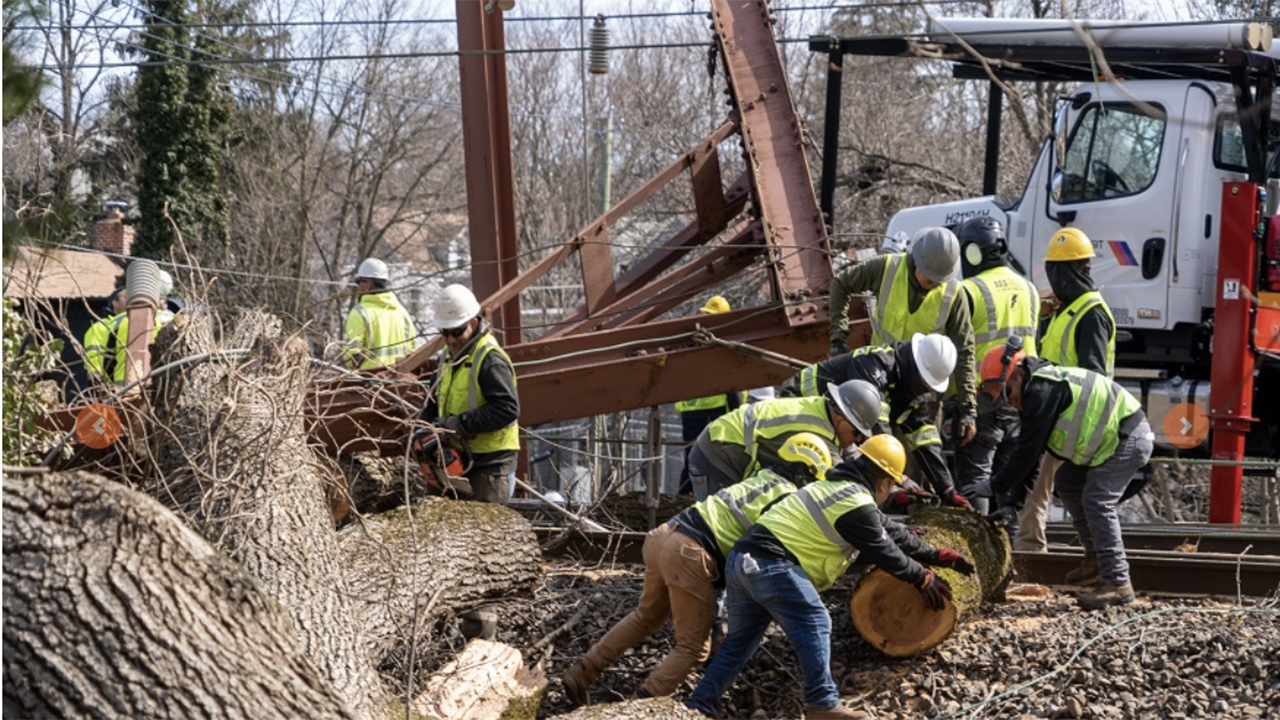
NJ Transit photo
New Jersey Transit (NJT) recently concluded a challenging week involving two “cutoffs”: a seven-day service outage on most of its busy Morris & Essex (M&E) Line and connected Gladstone Branch, and a renewed call for service restoration of an historic right-of-way in western New Jersey.
The week of March 7 began with violent storms that tore through northern New Jersey. The worst effect for NJT involved a massive, very old tree on private property adjacent to NJT’s elevated, three-track M&E right-of-way in Maplewood. The storm blew the tree over, pulling down the catenary wire and crushing a three-track-span gantry support, shutting down service for a week and prompting emergency repairs. NJT’s Gladstone Branch, which splits from the M&E at Summit, N.J., was also affected.
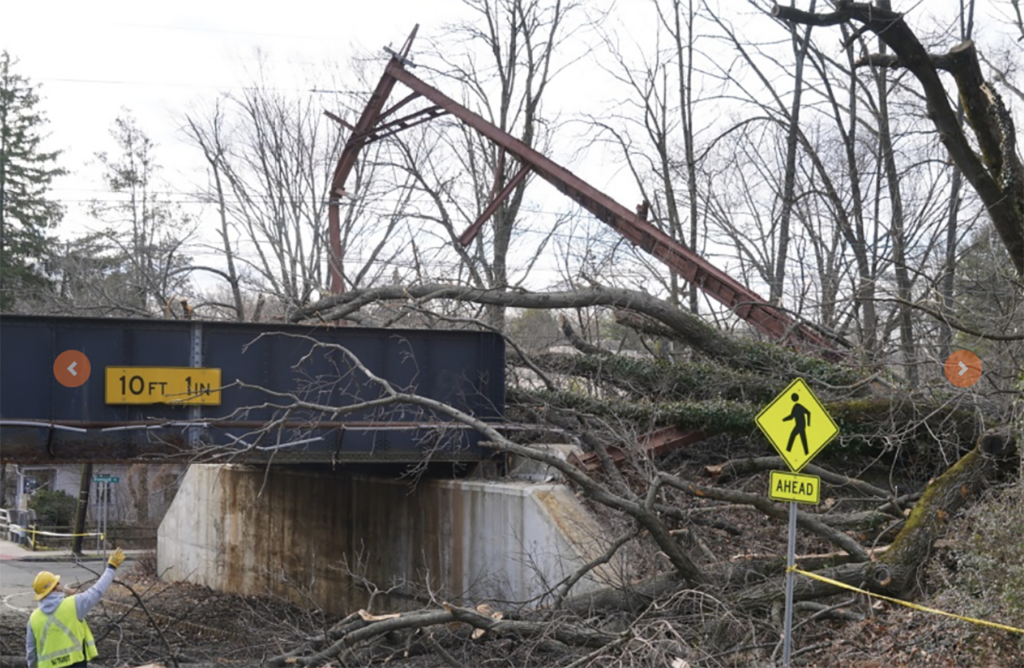
NJT communications officer Nancy Snyder told Railway Age that the m/w crews on the scene making repairs “worked diligently around the clock in all weather conditions throughout the week to restore service as quickly and safely as possible. In the meantime, we offered numerous transportation options for impacted customers.”
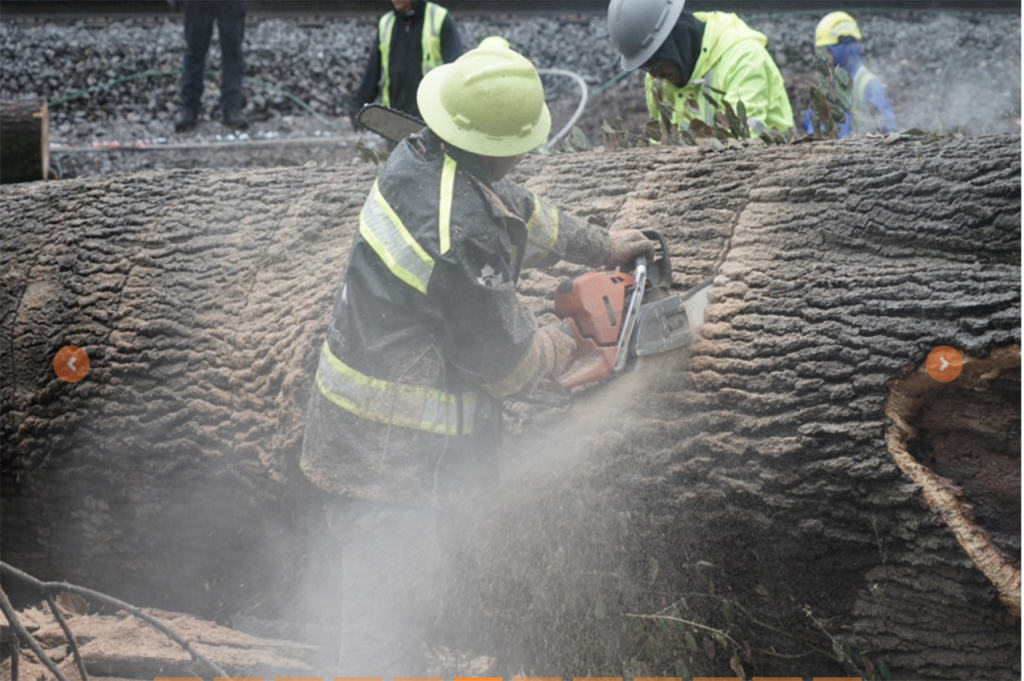

By March 9, hourly service had been re-established between South Orange and New York Penn Station on a modified schedule with ALP-45DP dual-power locomotives capable of running under overhead electric power or in diesel mode, in push-pull operation. Trains that normally run on the M&E west of Dover toward Hackettstown ran on the Montclair-Boonton Line, an alternate routing. Bus service was operated in other locations. After a seven-day outage, service was fully restored on March 15.
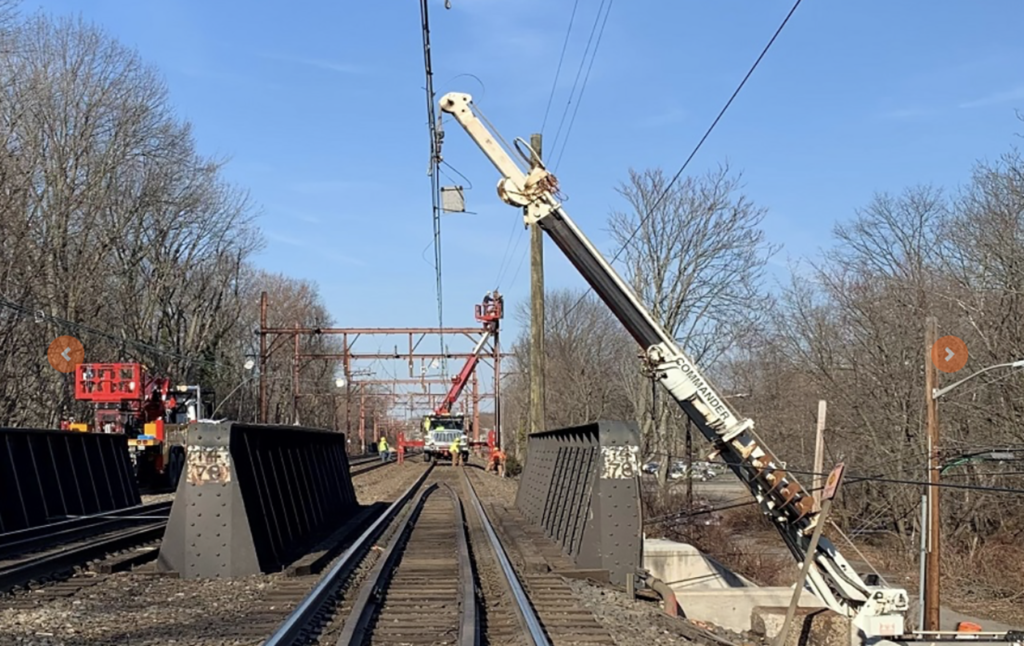
Regarding the other ‘cutoff,’ the NJT March board meeting included renewed commentary on the Lackawanna Cutoff Project, much of it by elected officials in western New Jersey. The historic Cutoff, part of NJT predecessor Delaware, Lackawanna & Western, opened for service in 1911 and reduced travel time for trains running between Port Morris (now a major NJT yard) toward Scranton, Pa., by merit of its relatively grade-free, tangent right-of-way. The last regular passenger train (by then the Erie-Lackawanna, following the merger of the DL&W and Erie in 1960) operated on the Cutoff in 1970, and it was taken out of service in the 1980s. There has been talk of restoring it and running passenger trains to Scranton for the past 35 years, but little has come of that initiative, aside from some studies, until recently.

NJT is gradually working on extending service on a small portion of the Cutoff, to a future park-and-ride station in Andover Township (in Sussex County, in the northwest corner of the state), presumably the first phase of a multi-phase project that would involve restoring the Cutoff to its former glory. There have also plans for eventual service restoration to Scranton eventually. Inclusion of Scranton in Amtrak’s Connect US project list for 2035 has spurred renewed interest, particularly among local elected officials.
Rep. Josh Gottheimer (D-N.J.) and other members of Congress from the area that would have rail service have started pushing for the project in Washington; Gottheimer commented on the project at the NJT board meeting. He and other political leaders from western New Jersey are calling for progress. NJT’s Snyder told Railway Age that the Cutoff project is expected to be addressed in more detail at the agency’s April board meeting. While there has also been local opposition to the eventual restoration of the line, advocates from the Lackawanna Coalition and the New Jersey Association of Railroad Passengers (NJ-ARP) have consistently supported the prospect of passenger trains running again to the Poconos and Scranton.
